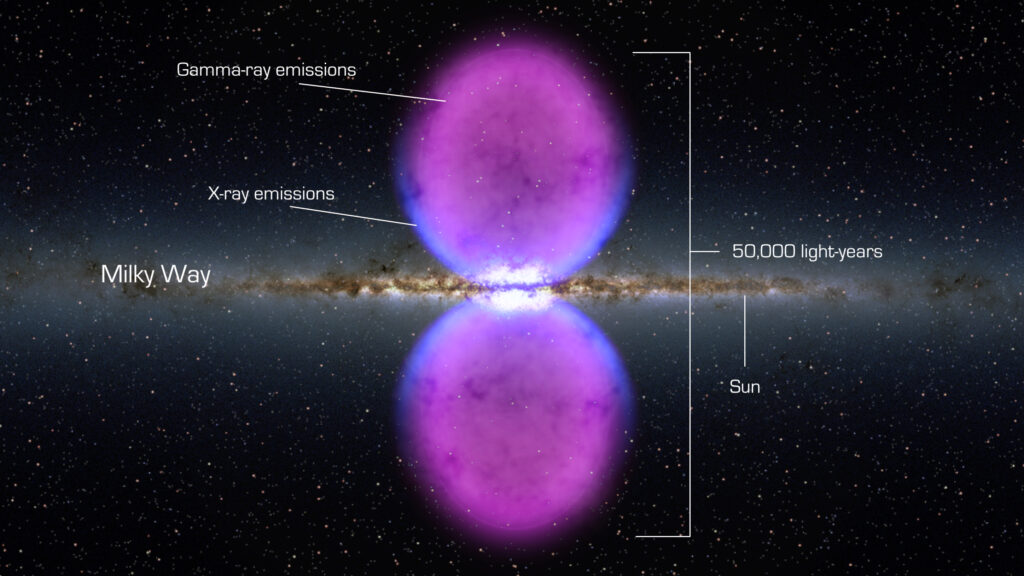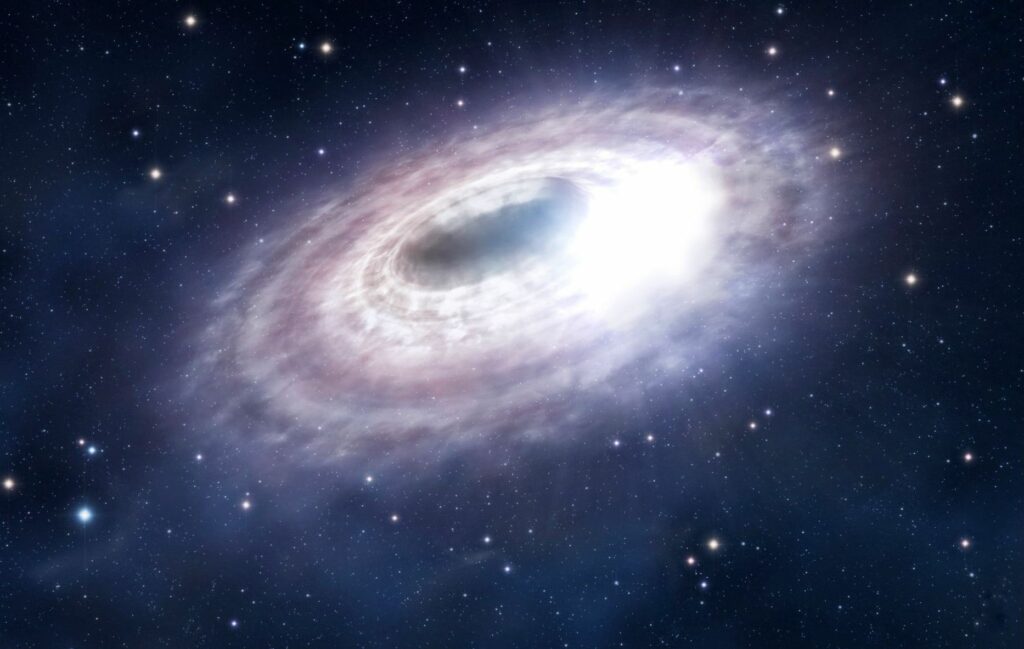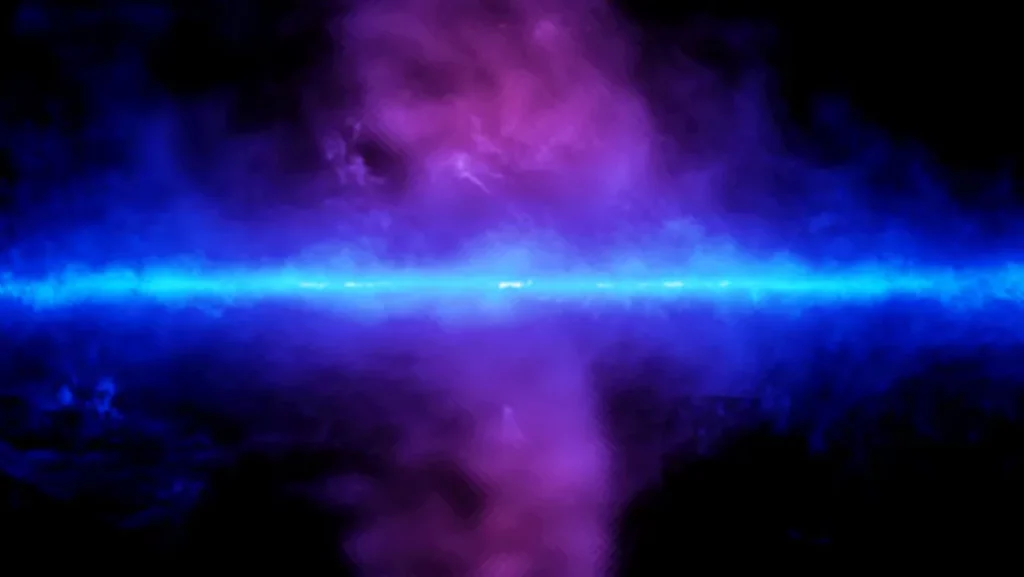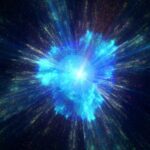About ten years ago, the astronomical world was buzzing with excitement. Why? Because researchers had discovered two enormous, bubble-like structures of hot plasma, seemingly sprouting from the center of our Milky Way. These cosmic balloons were spotted with the Fermi Space Telescope and were fittingly named the “Fermi Bubbles.” But how did these mysterious structures form? For a long time, nobody really knew. However, thanks to recent discoveries, we might finally be getting closer to an answer. And, spoiler alert: our galaxy’s supermassive black hole, Sagittarius A*, is right at the center of the action.
Galactic Hot Air Balloons
Back in 2010, NASA unveiled a jaw-dropping image of the gamma-ray sky. This picture was compiled after two years of observations by the Fermi Space Telescope, and it was pretty spectacular. You could see the bright band of the Milky Way stretching across the sky, dotted with points of light representing distant galaxies and special objects within our galaxy. However, you couldn’t see the Fermi Bubbles at first glance. It took some heavy-duty image processing to remove the strong radiation and enhance the contrast. Once that was done, two enormous, bubble-like structures, perpendicular to the Milky Way’s disk, popped into view.
And when we say enormous, we mean enormous. These bubbles span a whopping 25,000 light-years. For context, the diameter of our galaxy is about 100,000 light-years. If our eyes were sensitive to gamma rays, these cosmic balloons would dominate half of the night sky. Unfortunately, we can only see visible light, which is far less energetic compared to gamma rays. While visible light photons have energies of around 2-3 electron volts (eV), gamma rays are a whole different beast, with energies of more than a billion electron volts (GeV). That’s one billion times more energetic than visible light photons!
How Are Gamma Rays Created?
When you hear “gamma rays,” you might immediately think of something dangerous, like a nuclear reactor meltdown (or turning into the Hulk). But in space, gamma rays are much more welcome. They’re produced when highly energetic particles, often moving close to the speed of light, collide with something—another particle, for instance. There’s also a more exotic way: when a fast-moving particle collides with a low-energy photon (like a red photon), it can transfer energy to the photon, turning it into a high-energy gamma ray. This process, known as the “inverse Compton effect,” might sound complicated, but it’s basically a cosmic version of a pool shot where the cue ball (the particle) smacks into a photon and sends it flying with more energy.
But the big question is: What could accelerate these particles to such insane speeds in the first place? Something big must have happened, something explosive. That’s where things get exciting (or terrifying, depending on how you look at it).
Two Competing Theories: Starburst or Black Hole?
The Fermi Bubbles are centered around the middle of the Milky Way, home to Sagittarius A*, the supermassive black hole lurking at our galaxy’s heart. This led astronomers to consider two possible explanations for the origin of the Fermi Bubbles: either they were formed by high-energy jets from the black hole, or they were the result of a massive starburst—an intense period of star formation where many stars were born and then promptly exploded as supernovae.
Either way, something was definitely blowing off a lot of steam in the center of the Milky Way.

Fermi Bubbles: Not Your Everyday Explosion
If these bubbles were the result of a starburst or a black hole jet, you’d think we would’ve noticed them sooner, right? Wrong. Detecting gamma rays is tricky business. For starters, gamma rays don’t reach Earth’s surface because our atmosphere does a great job of blocking them (phew!). That means we need space telescopes like Fermi to observe them.
Fermi orbits the Earth at around 550 kilometers (about 340 miles), the same altitude as the Hubble Space Telescope, and it has been scanning the gamma-ray sky since 2008. However, gamma rays are rare, and the process of detecting them is painstakingly slow. Unlike visible light photons, which pour into our eyes or telescopes by the bucketload, gamma photons are more like occasional guests at a dinner party—you wait around for them to show up.
Another issue is that gamma photons are so energetic that they can’t just be reflected by a regular telescope mirror. Instead, gamma-ray telescopes like Fermi’s Large Area Telescope (LAT) use layers of metal. When a gamma photon collides with one of these metal sheets, it produces an electron and a positron. These particles then leave tracks, and by analyzing their paths, scientists can figure out where the original gamma photon came from. It’s like reconstructing a crime scene, except the evidence is a photon that traveled millions of years through space.
Enter eROSITA: A New Piece of the Puzzle
For years, the Fermi Bubbles stumped astronomers. But in 2020, a new player entered the scene: eROSITA, the main instrument of the German-Russian satellite SRG. It observed the sky in X-rays and, to everyone’s surprise, discovered structures very similar to the Fermi Bubbles, only these were emitting much lower-energy X-rays.
These “eROSITA bubbles” were found to be even larger than the Fermi Bubbles, stretching 45,000 light-years across. This was a game-changer. Suddenly, scientists had twice the data to work with, and it became clear that both the Fermi Bubbles and the eROSITA bubbles had the same origin. The fact that these bubbles overlapped perfectly pointed to a single event that created both structures. But what was that event?
The Smoking Gun: Sagittarius A*
All eyes turned to Sagittarius A*, the black hole at the center of the Milky Way. Although this black hole is currently “starving” (i.e., not actively feeding), evidence suggests that it wasn’t always this way. Around 2.6 million years ago, it seems our black hole was a lot more active, gulping down matter and spewing out powerful jets of energy. These jets likely created the Fermi Bubbles, with the associated shock waves producing the eROSITA bubbles. This model explains the shapes and sizes of both sets of bubbles, and crucially, it rules out the starburst theory.
However, there’s one little problem: Recent images of Sagittarius A* taken by the Event Horizon Telescope suggest that we’re looking directly at the accretion disk of the black hole. If that’s the case, the jets should be aimed directly at us. So, how could the bubbles form perpendicular to the galactic disk?

Does Sagittarius A* Dance?
One possibility is that black holes can, well, “dance.” In smaller black holes, we’ve seen that their jets can precess, or wobble like a spinning top. This behavior has been observed in X-ray binaries, where black holes change the direction of their jets over just a few days. Could Sagittarius A* be doing the same thing, just on a much longer timescale?
Alternatively, the image of Sagittarius A* might be misleading. Black holes are notoriously difficult to photograph, and the reconstruction of these images is incredibly complex. It’s possible that what we’re seeing isn’t a traditional accretion disk at all, but rather a diffuse cloud of material, which could explain the strange geometry.
Questions for the Future
So, the mystery of the Fermi Bubbles seems to be (mostly) solved: Around 2.6 million years ago, Sagittarius A* went on a feeding frenzy, creating powerful jets that formed the Fermi and eROSITA bubbles. However, like all good scientific discoveries, this one raises even more questions. What triggered the black hole’s active phase? And how did it go from feasting to famine? Could the black hole’s jets have been wobbling?
These are questions that only further observations can answer. So, until then, we’ll be keeping our eyes (and telescopes) peeled, searching for the next clue in this cosmic whodunit.



